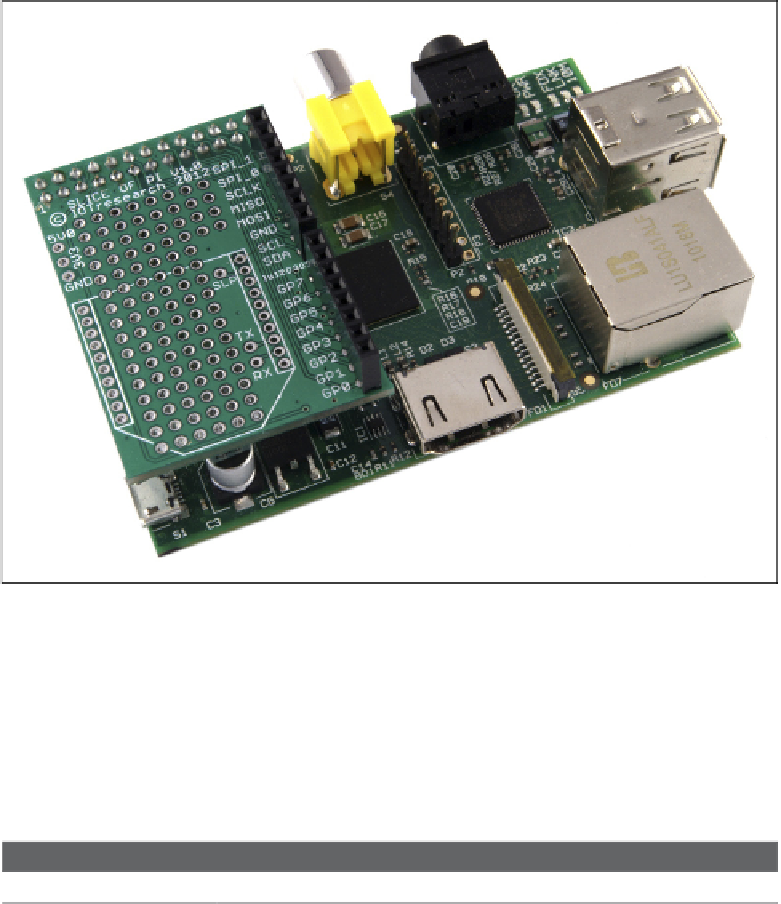Hardware Reference
In-Depth Information
Figure 16-3:
The Slice of Pi,
connected to the
Pi's GPIO port
The disadvantage of the Slice of Pi lies in its simplicity. Its compact size means that it is unsuitable
for the creation of larger or more complex prototypes, and while the header layout provides some
protection against short circuits, there's no protection against the use of 5 V components that can
damage the Pi's 3.3 V logic circuits. The labelling is also different to that used to typically describe
the Raspberry Pi's GPIO pins, which can lead to confusion when using a GPIO library not written
with the Slice of Pi in mind. Table 16-1 provides a mapping from one labelling system to another.
Table 16-1:
Slice of Pi GPIO Mappings
Physical Pin Number
Official Designation
Slice of Pi Label
7
GPIO Pin 4 (or General Purpose Clock 0)
GP7
11
GPIO Pin 17
GP0
12
GPIO Pin 18
GP1
13
GPIO Pin 27 (21 on Revision 1 boards)
GP2
15
GPIO Pin 22
GP3
16
GPIO Pin 23
GP4
18
GPIO Pin 24
GP5
22
GPIO Pin 25
GP6










